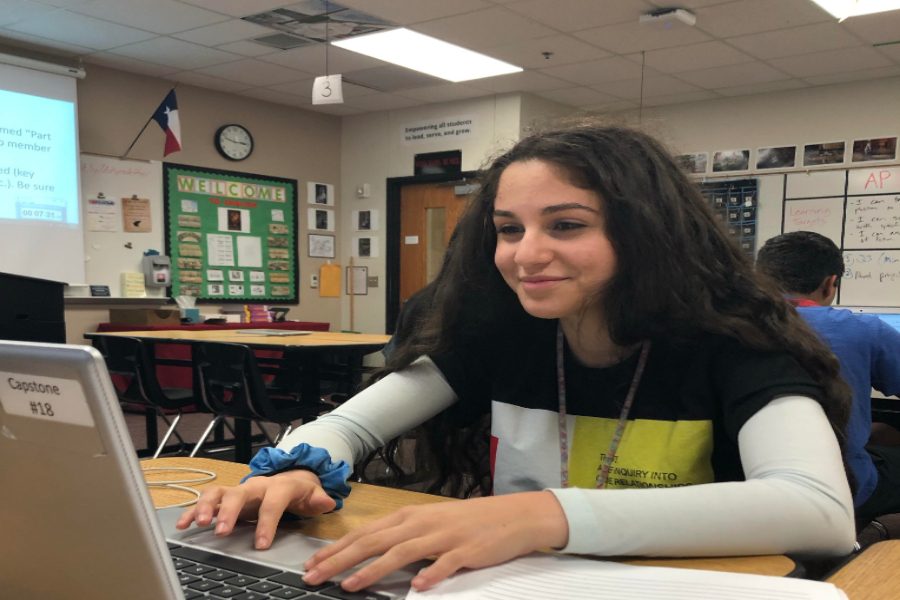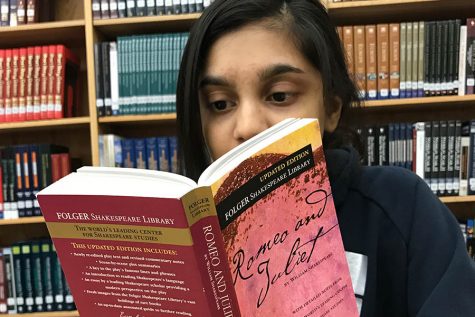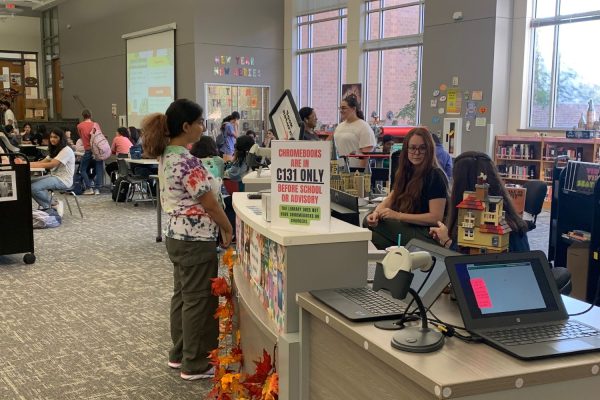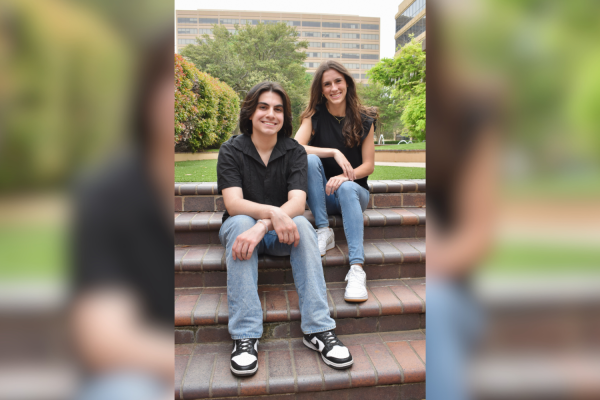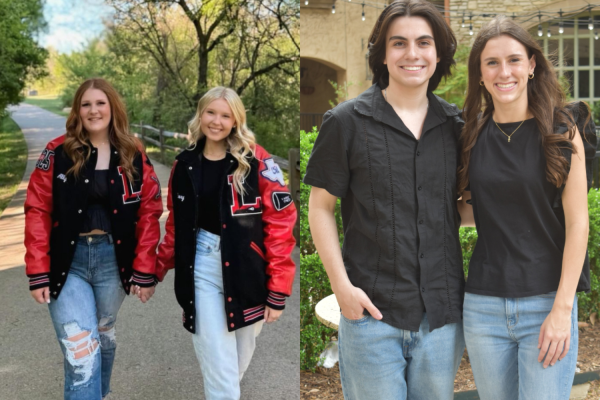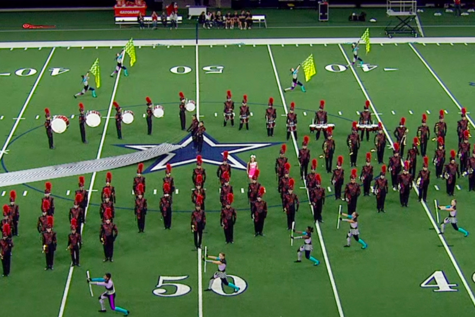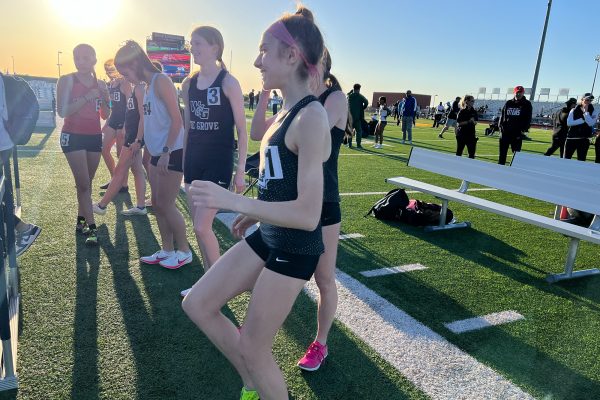Beat of her heart gets an electric boost
Junior celebrates 7 years with pacemaker
Up until this Thursday, staff and students have the opportunity to compete in a 4-word writing contest.
Every year, around 3 million people worldwide are implanted with a pacemaker, with a small percentage of these patients children. The tiny device is used to aide in pumping the heart, and can be used to treat rare afflictions in kids with a variety of cardiac issues. For junior Celia Abdallah, it’s been a life saver, and on Friday she celebrates the 7th anniversary of having her pacemaker implanted in her chest.
“When I was eight months old, the doctors detected that I had a heart murmur, and at first they didn’t really see anything too abnormal with it, it was just going to be a monthly check up thing,” Celia said. “As I got older, it progressively got worse, and then they started noticing I was going into cardiac pauses , which is when your heart stops beating for a certain amount of time. Then it got so bad to the point where I would have to get it checked, like every two weeks because my cardiac pauses would be like at like 3.5 [seconds].”
Early on, Celia was un-diagnosed with any specific disorder. All that was known was that her heart was functioning at a lower level than she needed to live.
There was a panic, you know, because her father and I never had any issues with heart and we’re very, very, healthy. So what they had to do is put her completely to sleep, and they even made me sign papers, I don’t think she knows, but if she dies, they’re not responsible for that. — Celia’s mother, French teacher Dina Baalbaki
“One night, I had 22 of those episodes just in one night, where I would go into cardiac pauses,” Celia said. “So we went into Children’s and they told me I needed a pacemaker because my lower chamber doesn’t work, so the beats would leave my upper chamber, but get lost.”
The malfunction with the electrical impulses in Celia’s heart could only be fixed with multiple surgerys, constant monitoring, and the implementation of a pacemaker.
“In my first surgery the pacemaker was placed under the sternum because I was too small for to place close to my heart. Then with my second second surgery, years later, they removed that pacemaker,” Celia said. “They coil the wires and just put them back, then opened another slot, put my new pacemaker in close to my heart and connected it with the wires to my heart.”
At just four years old, Celia endured events that would affect her psyche for the rest of her life.
“All this is really traumatizing. I guess the worst part was like when I was I was in the hospital for about nine weeks, and I was four years old,” Celia said “One of the worst things was every single day I would have to get six shots in my arms, and six shots in my legs. Like, the whole first surgery was probably like one of the worst experiences because they thought I was going to die.”
Celia’s mother, French teacher Dina Baalbaki had to deal with not only supporting her daughter, but maintaining her own composure in a time of incredible stress and emotion that can come with having a sick child.
“There was a panic, you know, because her father and I never had any issues with heart and we’re very, very, healthy,” Dina said. “So what they had to do is put her completely to sleep, and they even made me sign papers, I don’t think she knows, but if she dies, they’re not responsible for that. They had to kind of put her completely to sleep, because what they wanted to do is check the actual heart if there is any abnormality, and they didn’t want her muscles to twitch or move or anything. What they were doing was because that would alter the results, so no other choice. I did that.”
Celia’s first surgery took the family by surprise in October of 2006, marking one of the most difficult times in her and her mother’s life.
“[Our cardiac doctor] told me, ‘Okay, we’re gonna start doing it like every six months, because the thing with Celia is things are not getting worse, but they’re not changing neither. They’re not improving.’ He said, ‘What we’re going to have to do is make sure that we’re not missing anything,’“ Dina said. “So now we’re going to start doing the holter monitor every two months.”
The news of Celia’s declining heart function halted the holiday, and brought the family straight to the hospital.
It was really tough. Celia was so little, you know, she had long blond hair, pretty. And then I saw, you know, like the blood and like all the machine beep, beep, beep, beep beep. And she was like, ‘Mama, Mama,’ and she had just woken up from the anesthesia. And I sat there and I held her and I’m like, what are we gonna do? — Dina Baalbaki
“Sure enough, that first time two months after I took they put the holter monitor on her, And we were getting ready to go on Halloween Trick or Treat with Yanci, her brother, and the doctor called me and told me ‘Hey, do you have a minute we really have to talk? Celia’s heart monitor registered that she had like extremely low heartbeats, that her heartbeats are like 25 to 30 beats a minute, but Celia had in one night over 30 cardiac pauses,’” Baalbaki said. “So he said ‘Y’all could have lost her just in the sleep.’”
After her first surgery, Celia faced life-threatening complications that added to the already devastating situation the family was in.
“Because so many things went wrong, you know, like one of the nurses flushed my IV wrong and air was going under my diaphragm, my left lung collapsed, and I like, passed out, and then the doctors couldn’t figure out what was going on,” Celia said. “Things kept getting worse, and they were like, ‘Oh, it’s an infection of the valves’ or ‘It’s pneumonia.’ They didn’t know what was going on. And it just took such a long period of time, but it definitely was really scary. I remember that.”
For Dina, it was an emotional challenge to watch her daughter endure the various medical procedures.
“When they told me I have to go in the ICU, I had to go and check her. The room is like a long room, you know, and then I mean, I felt I was gonna faint several times as I was walking,” Dina said. “By the time I went there, man it was a tough time. It was really tough. Celia was so little, you know, she had long blond hair, pretty. And then I saw, you know, like the blood and like all the machine beep, beep, beep, beep beep. And she was like, ‘Mama, Mama,’ and she had just woken up from the anesthesia. And I sat there and I held her and I’m like, what are we gonna do?”
Years after the initial surgery, doctors had to go back in to remove Celia’s pacemaker, and place a newer model closer to her heart. After the life threatening mistakes in the first surgery, Dina was determined to prevent these errors completely.
One of the main things that got me through my surgeries and stuff was the nurses that were there. They made such a big impact on my life and they still do when I go for my checkups, and I just really want to be able to model that for other kids that are going through the same thing. — Celia Abdallah
“The second time around, we took her for the emergency is when we stayed pretty long. And of course I fought every doctor, I fought every nurse, I fought everybody. Some people that they would bring to take her blood and they’re trying on her I would yell at him go get me someone better. Celia has gone through so much,” Dina said. “I even said to the chief of staff, I said, ‘We’ve been here for weeks now, and nobody has found any thing, can you just tell me what’s wrong with my daughter? I mean, if this was your own daughter would you have treated her this way?’”
After the second pacemaker surgery on May 3, 2012, Celia made a much more smooth recovery, and began to transition back into her normal life.
Years later, she has physically recovered. but the memories of her stays in the hospital have had a lasting impact on her outlook.
“I definitely think it’s made me more appreciative of what I have, because I’ve kind of saw the worst of the worst of what kids could have in a children’s hospital. Like, I made it out I’m okay,” Celia said. “I would go up and play with all the cancer patients, and I’d be like, ‘Oh, you know, I’m gonna be alive.’ Like, I’m going to make it out of here. You know, these kids don’t have the chance that I do, and I still kind of carry that with me.”
Not only did her memories of the hospital give her a greater appreciation for life, but a passion for helping other children who go through similar struggles.
“So because, you know, I kind of saw everything I did see, I realized that I wanted to be a nurse, but more specifically with children, because I don’t want kids to have to go through what I went through,” Celia said. “One of the main things that got me through my surgeries and stuff was the nurses that were there. They made such a big impact on my life and they still do when I go for my checkups, and I just really want to be able to model that for other kids that are going through the same thing.”
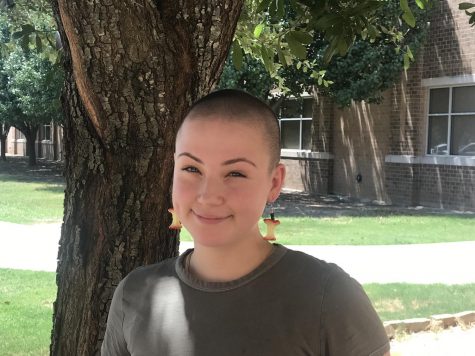
Maddie Aronson is a senior, and joined Wingspan her junior year. She loves attention, oreos, and fun earrings, and is looking forward to a career in environmental...



